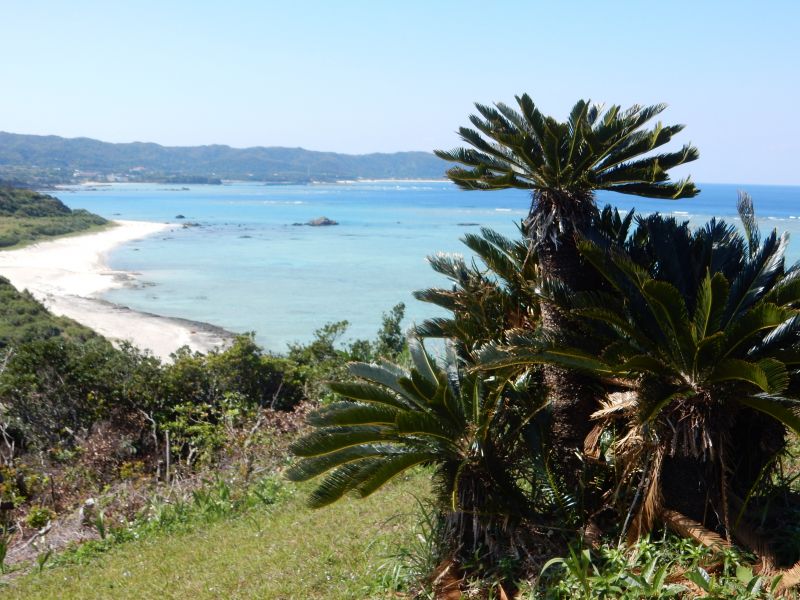Divination is an important part of shamanistic religions. Through the aid of unseen spirits, shamans claim ability to see into the future. In fossilised cases such as Shinto, where shamanistic possession is retained in symbolic form only, omikuji fortune telling … Read the rest
Category: Shamanic connections (Page 2 of 8)
Before heading for the interview with Sakai-gami, respected yuta of northern Oshima, I went in search of the mythical origins of the island culture. According to brochures, there’s a hill with a monument celebrating the myth of Amanchi and the … Read the rest
 The Amami islands lie between Kyushu and Okinawa. Though technically they belong to Kagoshima Prefecture, they have more of the feel of Okinawa. There are five inhabited islands in the archipelago, of which Amami Oshima is the biggest. Total population … Read the rest
The Amami islands lie between Kyushu and Okinawa. Though technically they belong to Kagoshima Prefecture, they have more of the feel of Okinawa. There are five inhabited islands in the archipelago, of which Amami Oshima is the biggest. Total population … Read the rest
It’s not uncommon for Westerners to have a rosy-eyed view of shamanic and post-shamanic cultures (amongst which Shinto can be classified). The Ainu cult of the bear is an example, since in an animist-based culture one might presume the animal
The shaman is a figure of authority who is not only guardian of the clan history but a master of ritual, healing and divination. This derives from the ability to communicate with ancestral spirits, which preside over descendants, sometimes acting … Read the rest
My guide in Busan, Ryu Dong-il, was warm and sensitive to a tourist’s viewpoint. By the end of the day I’d got to know about his family, hobbies and a whole lot about Korean culture. The son of an illiterate … Read the rest
‘Actually not many Koreans know much about the shamanic tradition. It’s strange,’ scholar David Mason told me. ‘It’s as if they were ashamed of it. Few Koreans could face their past until the 1980s because it was all too painful. … Read the rest
